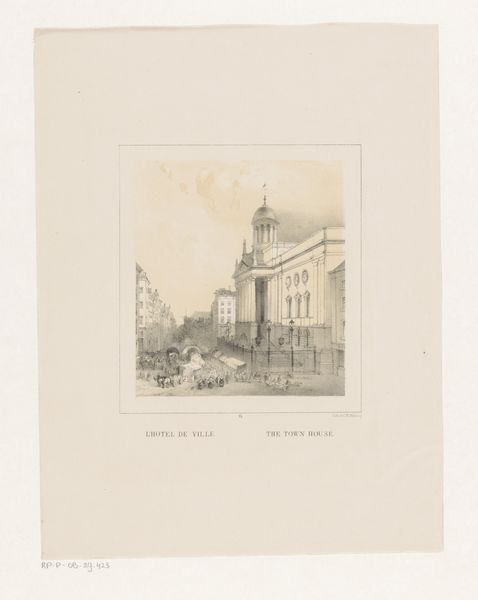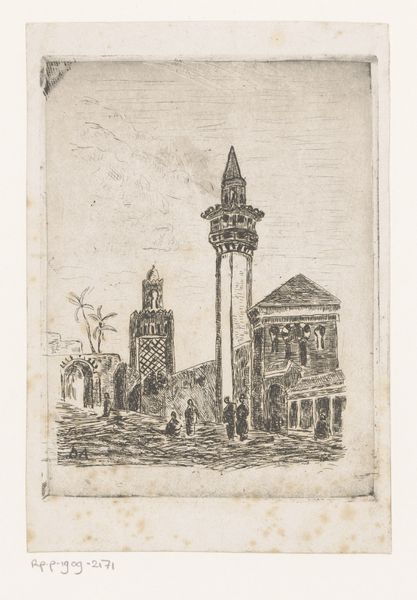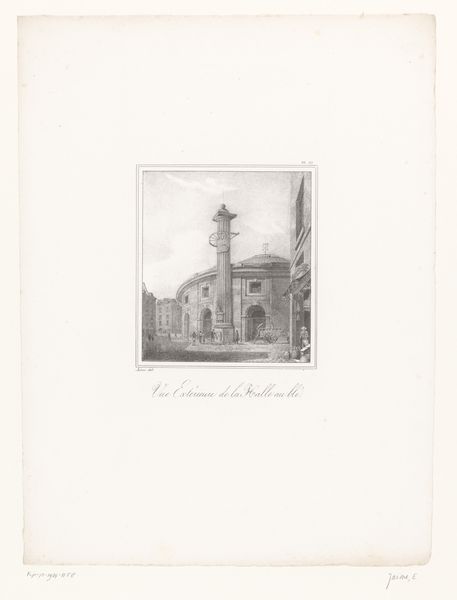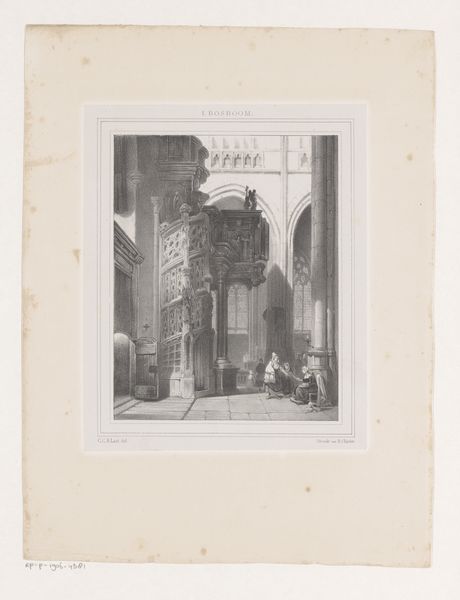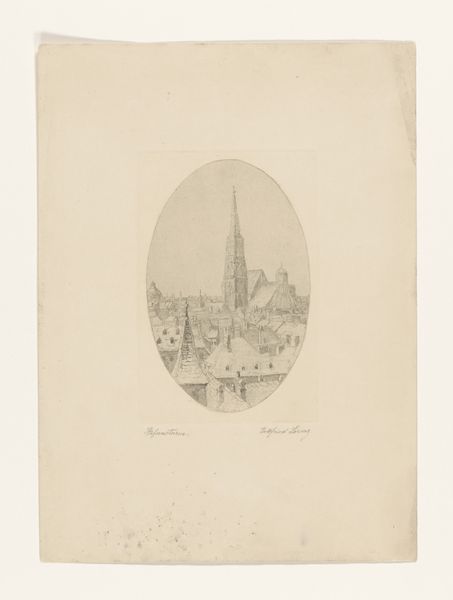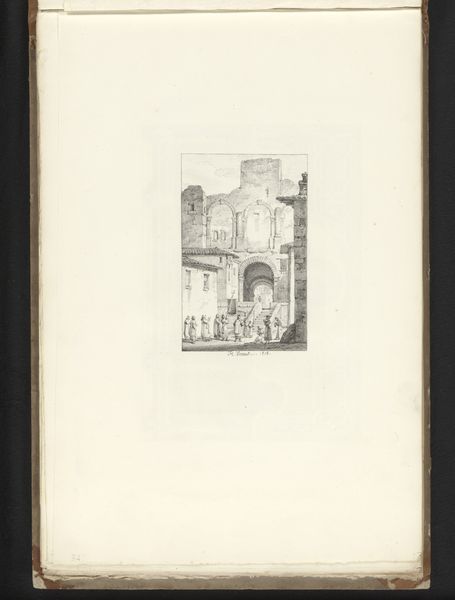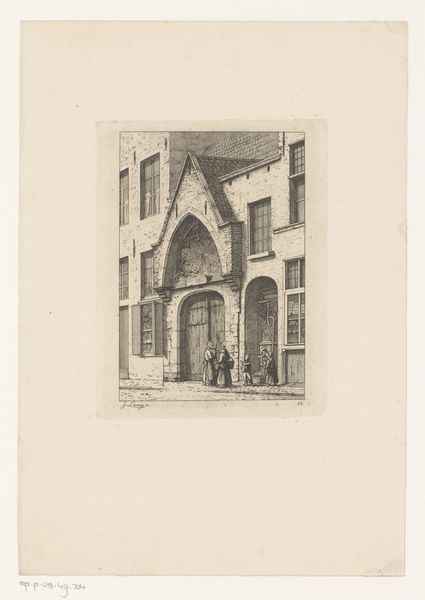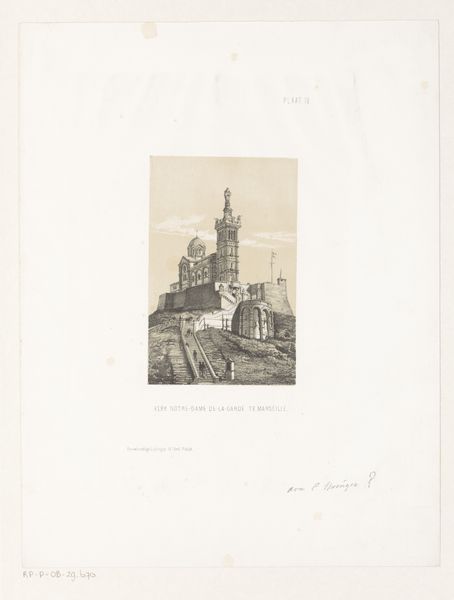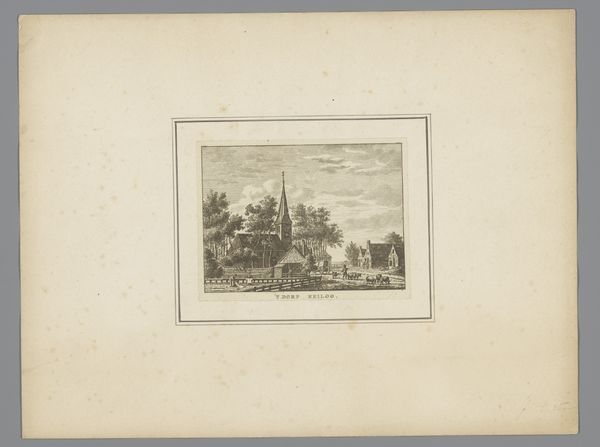
drawing, print, paper, engraving
#
drawing
#
ink paper printed
# print
#
landscape
#
paper
#
cityscape
#
islamic-art
#
engraving
Dimensions: height 160 mm, width 120 mm
Copyright: Rijks Museum: Open Domain
This etching, Bazaar en moskee in Tunis, by Vicomte Arthur-Jean Le Bailly d'Inghuem, uses lines incised into a metal plate, to render this scene in Tunisia. Look closely, and you can see how the density and direction of these lines bring light and shade to the image. Etching is an indirect process: acid does the work of biting the image into the plate. This allows for a less physically forceful approach than direct engraving. But, it is no less skillful. The etcher must plan the image in advance, apply a resist to the plate, and then selectively expose areas to the acid bath. As a result, the artist can describe the architectural scene with great accuracy. The very repeatable nature of the printmaking process reflects the increasing industrialization of Europe at this time. But, this image also encapsulates a fascination with faraway places. We should also remember that d'Inghuem, as a Vicomte, was part of the colonial project, consuming images and places to increase social standing. Ultimately, by focusing on the printmaking process, we see that the image is as much about control and consumption, as it is about representation.
Comments
No comments
Be the first to comment and join the conversation on the ultimate creative platform.
